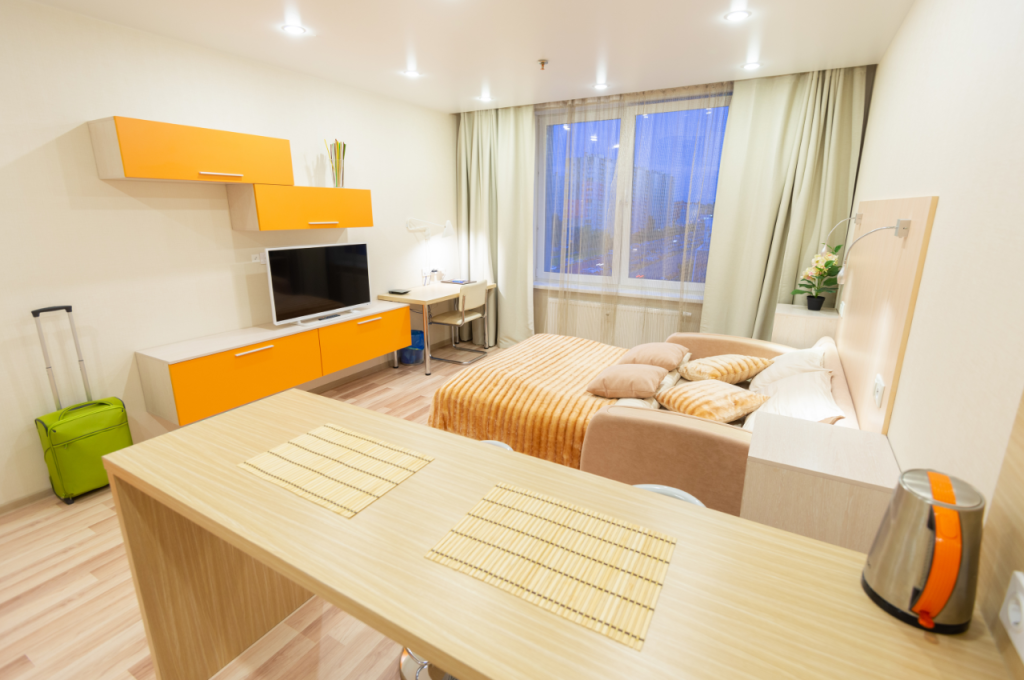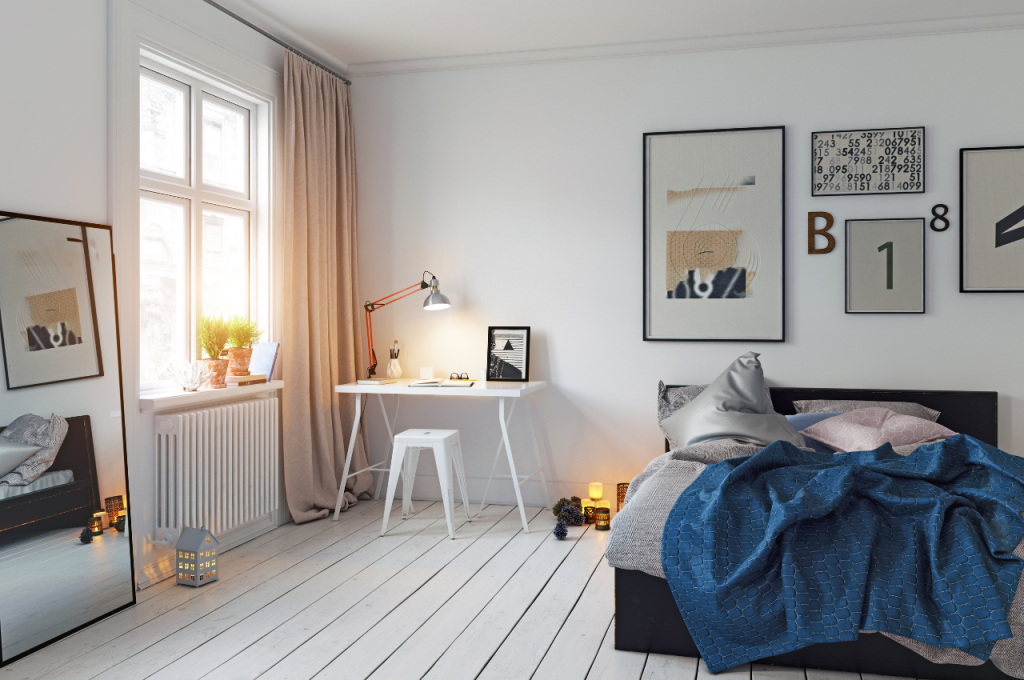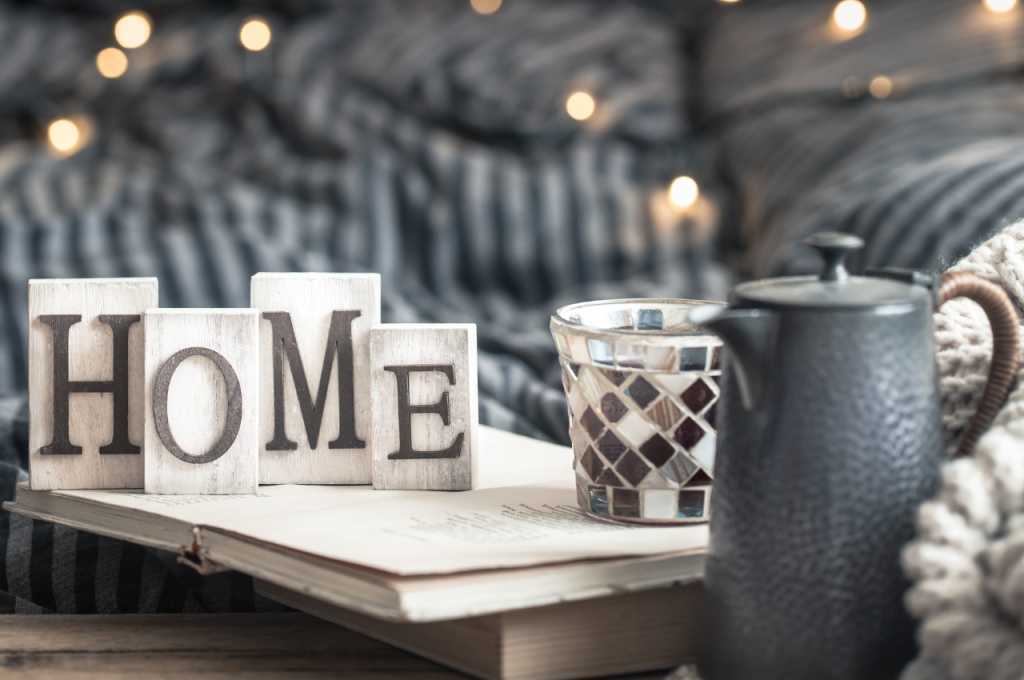To decorate a small space, utilize multifunctional furniture and maximize vertical storage options. Consider light, neutral colors to enhance the perception of space.
Decorating a small area can be a fun and creative challenge. With the right approach, you can transform even the tiniest space into a stylish and functional oasis. When designing a small space, keep in mind that less is more.
Opt for furniture pieces that serve multiple purposes, such as a storage ottoman or a foldable table. Incorporating mirrors can also help reflect light and make the room appear larger. The strategic placement of plants and artwork can add personality without overwhelming the space. By carefully selecting decor items and organizing them efficiently, you can achieve a visually appealing and comfortable small space.
Maximizing Functionality
Living in a small space requires a thoughtful approach to design to ensure every square inch serves a purpose. Maximizing functionality is key to creating a comfortable and efficient living environment, where every element contributes to the overall usability and enjoyment of the space.

Multi-purpose Furniture
Choose furniture items that serve more than one purpose to save space. For example, a sofa bed or an ottoman with hidden storage.
Creative Storage Solutions
Utilize vertical space by installing shelves or cabinets high on the walls. Additionally, storage ottomans or under-bed containers help organize clutter.
Optimizing Layout
In optimizing the layout of a small space, strategic planning is key to maximize functionality and create an illusion of spaciousness. By employing clever design techniques such as an open concept layout and utilizing vertical space, you can transform even the tiniest of spaces into a well-organized and visually appealing room. In this section, we will explore these techniques in detail.
Open Concept Design
An open-concept design is ideal for small spaces as it creates an uninterrupted flow of space, making the room feel larger and more inviting. Knocking down walls or removing partitions between rooms can instantly maximize the layout of your small space. By combining the living, dining, and kitchen areas into one cohesive space, you can eliminate visual barriers and create a sense of openness.
Consider using multi-functional furniture and storage solutions to further enhance the open concept layout. For example, a dining table that doubles as a workspace or a storage ottoman that can be used as both seating and a place to store items. Additionally, incorporating light colors and plenty of natural light will help to further enhance the illusion of space and create an airy atmosphere.
Utilizing Vertical Space
In a small space, it’s crucial to think vertically and make use of every inch of available wall space. Installing floating shelves, wall-mounted cabinets, or bookcases can provide valuable storage without taking up valuable floor space. By utilizing vertical space, you can keep the floor clear and create the illusion of a larger area.
Furthermore, consider incorporating tall and slim furniture pieces, such as floor-to-ceiling wardrobes or narrow bookshelves, to make the most of your vertical space. These pieces not only provide ample storage but also draw the eye upward, making the room appear taller.
By optimizing the layout of a small space through an open-concept design and utilizing vertical space, you can create an environment that is both functional and visually appealing. Implement these techniques to make the most of your small space and achieve a well-organized and spacious feel.
Playing With Light and Color
Decorating a small space can be a challenge, but by playing with light and color, you can transform even the tiniest of rooms into a stylish and inviting oasis. The strategic use of light and color can create the illusion of space, making your small room feel larger and more open. In this article, we will explore the importance of natural light and how to choose the right color palette to maximize the potential of your small space.
Importance of Natural Light
Natural light is a key element when it comes to decorating a small space. It has the power to brighten up the room and make it feel more spacious. Here are some tips to make the most of the natural light in your small space:
- Keep window treatments minimal: Avoid heavy curtains or blinds that can block the natural light. Instead, opt for sheer or lightweight curtains that will let the sunlight in.
- Use mirrors: Place mirrors strategically across windows or in dark corners to reflect the natural light and create the illusion of a larger space.
- Choose light-colored furniture and accessories: Light colors reflect light, while dark colors absorb it. Opt for light-colored furniture and accessories to enhance the natural light in your small space.
Choosing The Right Color Palette
The right color palette can make all the difference in a small space. Here are some tips to help you choose the perfect colors for your small room:
- Opt for light colors: Light colors such as white, beige, and pastels can make a small space feel brighter and more open. These colors reflect light, giving the illusion of a larger room.
- Consider a monochromatic scheme: A monochromatic color scheme, using different shades of the same color, can create a cohesive and visually pleasing look in a small space.
- Use pops of color sparingly: While light colors are ideal for small spaces, you can add pops of color through accessories such as throw pillows or artwork. Be sure to use them sparingly to avoid overwhelming the room.
By playing with light and color, you can transform your small space into a stylish and inviting retreat. Remember to maximize natural light and choose a color palette that reflects your style while creating the illusion of space. With these tips, your small room will feel larger, brighter, and more enjoyable to spend time in.
Incorporating Mirrors and Illusions
Incorporating mirrors and illusions is a smart design strategy for decorating small spaces. By strategically placing mirrors and using optical illusions, you can create the illusion of space and make your small room appear larger than it is.

Mirrors to Create Depth
Mirrors are an excellent tool for creating depth and visually expanding small spaces. By reflecting light and surrounding objects, mirrors can give the illusion of a more spacious room. To maximize the effect, place mirrors on walls opposite windows or light sources to bounce light around the room and brighten up the space.
Illusions for Visual Expansion
Using visual illusions in your small space can create the illusion of more square footage. Here are a few key illusion techniques to consider:
- Paint colors: Stick to light, neutral colors like whites, creams, and pastels. These shades reflect more light and make the room feel open and airy.
- Furniture placement: Arrange furniture in a way that promotes flow and maximizes walking space. Open floor plans and minimal furniture can make a room feel more spacious.
- Mirrored furniture: Consider incorporating mirrored furniture pieces like coffee tables or dressers. These pieces not only provide storage but also reflect light and give the illusion of more space.
- Vertical lines: Use vertical patterns or stripes on walls or curtains to draw the eye upwards and create the illusion of higher ceilings.
- Declutter: Keeping your space tidy and clutter-free can instantly make it feel more spacious. Optimize storage with shelves, bins, or hidden storage solutions to minimize visual distractions.
Embracing Minimalism
Minimalism is a powerful design philosophy that champions simplicity, functionality, and intentionality. Embracing minimalism in small space decor can create an uncluttered, peaceful environment that maximizes both style and functionality.
Decluttering Strategies
Start by implementing decluttering strategies to create a sense of serenity and organization in your small space. Consider employing storage solutions such as under-bed storage bins, hanging wall shelves, and multi-functional furniture pieces to maximize space and minimize clutter. Another effective tactic is to regularly assess belongings and purge items that are no longer necessary or do not serve a purpose in your space. Remember that clearing away visual clutter can make a significant impact on the overall aesthetic of your small space.
Simple and Clean Decor
Opt for simple and clean decor that complements the principles of minimalism. Choose furniture with clean lines and a neutral color palette to maintain a cohesive and unobtrusive design. Consider incorporating natural materials such as wood and stone to add warmth and texture to the space. Additionally, embrace negative space and avoid over-accessorizing to maintain a sense of openness and airiness. By keeping the decor simple and clean, you can cultivate a tranquil atmosphere without overwhelming the limited space available.
Greenery and Nature Indoors
Greenery and nature indoors can breathe new life into a small space, transforming it into an inviting and refreshing oasis. Incorporating plants and green elements not only adds aesthetic appeal but also enhances the overall ambiance, creating a more relaxed and calming environment. In this section, we will explore the benefits of indoor plants and how to effectively incorporate green space within a small living area.
Benefits of Indoor Plants
Indoor plants offer numerous advantages beyond their visual appeal. They purify the air by removing toxins and releasing oxygen, thereby improving overall air quality. In addition, studies have shown that indoor plants can reduce stress and increase productivity, making them a valuable addition to any small space.
Incorporating Green Space
When it comes to incorporating green space in a small area, it’s important to choose plants that are well-suited to indoor environments, such as spider plants, pothos, or snake plants. Consider utilizing vertical space with hanging plants or wall-mounted planters to maximize the use of limited floor space. Moreover, selecting the right planters and containers can add a decorative touch while maintaining a clutter-free environment.
Personalizing The Space
Enhance a small space by personalizing it with clever decorative elements and multifunctional furniture. Incorporate mirrors, use light colors, and add strategic lighting to create an illusion of spaciousness. Maximizing storage and selecting furniture with clean lines will help to declutter and optimize the area.
Showcasing Personal Touches
Personalizing a small space helps create a cozy atmosphere and reflects the inhabitant’s personality.
Customizing to Reflect Style
Incorporate personal items like photos, artwork, and memorabilia to infuse the space with character. Personal touches such as decorative pillows, unique lighting fixtures, or colorful rugs can make a big impact. Adding plants and greenery brings life to the room and refreshes the space.
Finishing Touches
When it comes to decorating a small space, it’s the finishing touches that can make a difference. These final details are what bring a room together and give it that polished and well-designed look. In this section, we will explore some key finishing touches that can elevate the style and functionality of your small space. From optimal lighting fixtures to adding textures and layers, these tips will help you create a space that is not only visually appealing but also comfortable and inviting.
Optimal Lighting Fixtures
Lighting plays a crucial role in any space, but it is especially important in a small room. The right lighting can make a small space appear larger and brighter, while the wrong lighting can make it feel cramped and gloomy. To optimize the lighting in your small space, consider the following:
- Choose fixtures that are compact and proportional to the room’s size, such as wall sconces or pendant lights.
- Utilize natural light by keeping window treatments minimal or sheer.
- Place mirrors strategically to reflect light and create the illusion of a larger space.
- Opt for adjustable lighting options, such as dimmer switches or lamps with adjustable arms, to customize the lighting for different activities and moods.
Adding Textures and Layers
When decorating a small space, it’s important to create visual interest and depth to make it feel cozy and welcoming. Adding textures and layers can achieve this effect. Here are some ideas to consider:

- Use rugs and carpets to add warmth and softness to the space.
- Choose throw pillows and blankets in different fabrics and patterns to add texture and color to seating areas.
- Hang curtains or drapes to add depth and visual interest to windows.
- Display artwork or photographs on the walls to add personality and a focal point.
Conclusion
Incorporating these simple tips and tricks can help you transform your small space into a stylish and functional area. By utilizing multifunctional furniture, maximizing vertical space, embracing natural light, and utilizing storage solutions, you can create a cozy and welcoming environment.
With a little creativity and resourcefulness, even the tiniest of spaces can feel spacious and inviting.

